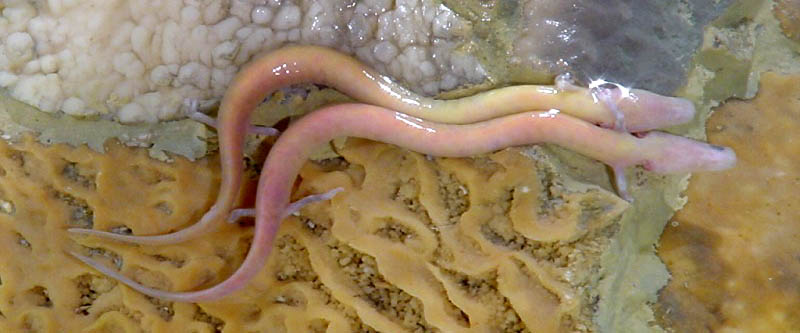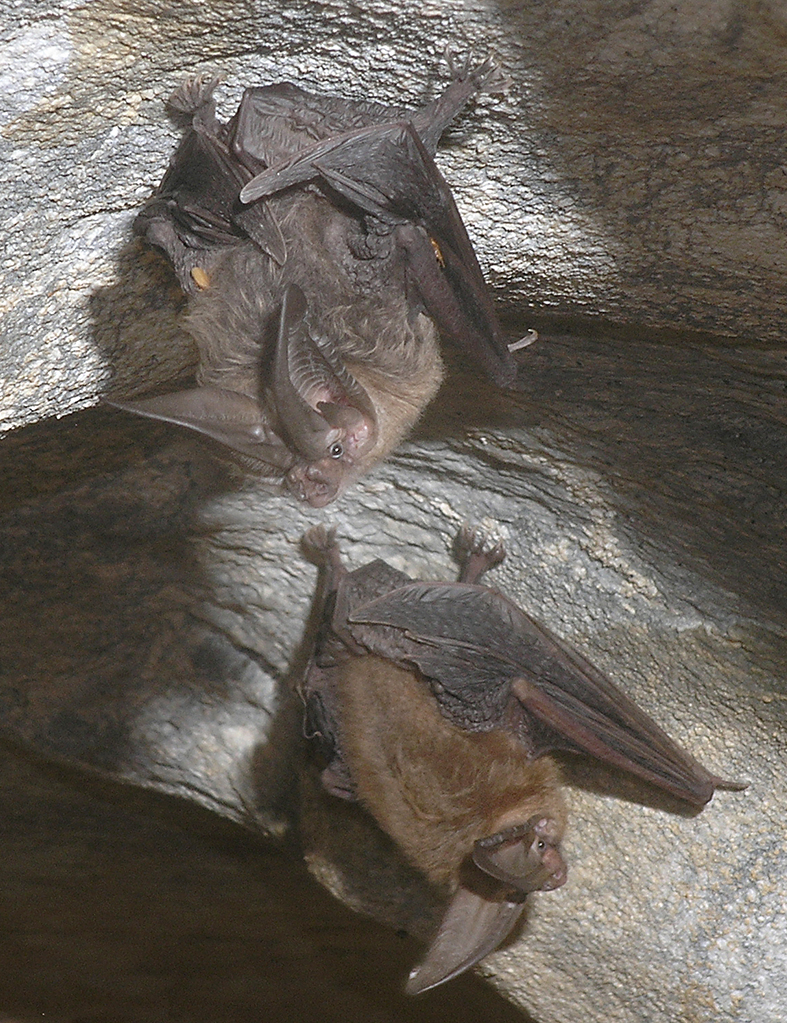Cave Creatures
Cave-inhabiting animals are often categorized as troglobites (cave-limited species), troglophiles (species that can live their entire lives in caves, but also occur in other environments), trogloxenes (species that use caves but cannot complete their life cycle fully in caves) and accidentals (animals not in one of the previous categories). Some authors use separate terminology for aquatic forms (for example, stygobites, stygophiles, and stygoxenes).
Blind Cave Salamanders in a Slovenian Cave
Of these animals, the troglobites are perhaps the most unusual organisms. Troglobitic species often show a number of characteristics, termed troglomorphic, associated with their adaptation to subterranean life. These characteristics may include a loss of pigment (often resulting in a pale or white coloration), a loss of eyes (or at least of optical functionality), an elongation of appendages, and an enhancement of other senses (such as the ability to sense vibrations in water). Aquatic troglobites (or stygobites), such as the endangered Alabama cave shrimp, live in bodies of water found in caves and get nutrients from detritus washed into their caves and from the feces of bats and other cave inhabitants. Other aquatic troglobites include cave fish, and cave salamanders such as the olm and the Texas blind salamander.
Cave Insects
Cave insects such as Oligaphorura (formerly Archaphorura) schoetti are troglophiles, reaching 1.7 millimeters (0.067 in) in length. They have extensive distribution and have been studied fairly widely. Most specimens are female, but a male specimen was collected from St Cuthberts Swallet in 1969.
Bats
Townsend’s big-eared bats in a cave in California. (see image)
Bats, such as the gray bat and Mexican free-tailed bat, are trogloxenes and are often found in caves; they forage outside of the caves. Some species of cave crickets are classified as trogloxenes, because they roost in caves by day and forage above ground at night.
Because of the fragile nature of the cave ecosystem, and the fact that cave regions tend to be isolated from one another, caves harbor a number of endangered species, such as the Tooth cave spider, liphistius trapdoor spider, and the gray bat.
Caves are visited by many surface-living animals, including humans. These are usually relatively short-lived incursions, due to the lack of light and sustenance.
Cave entrances often have typical florae. For instance, in the eastern temperate United States, cave entrances are most frequently (and often densely) populated by the bulblet fern, Cystopteris bulbifera.

Educate your Students!
Many caves of the NCA offer educational programs to students, scout troops and more! Contact our Director for a list of caverns that offer these programs.


